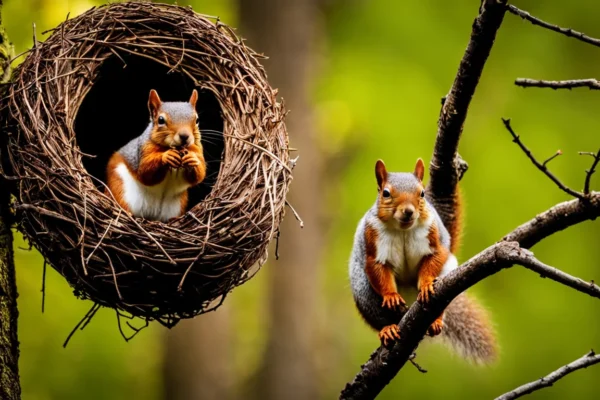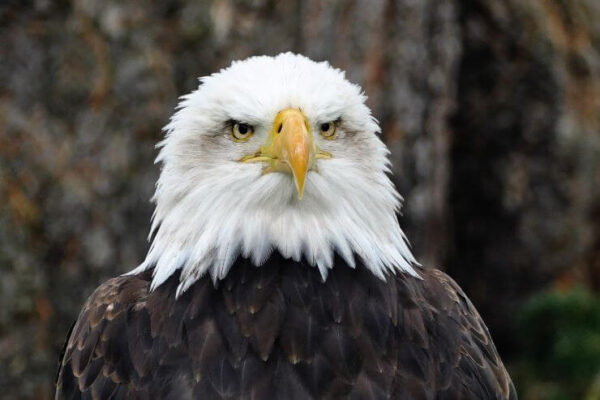Turnus vulgaris, commonly known as the common or European starling, is a year-round resident in the UK and much of Europe. Additionally, they were brought to nations including the US, Canada, Australia, and New Zealand, where their numbers are currently thriving.
Little is known about the appearance of starling chicks, despite their prevalence in rural and urban locations. As a result, we have produced this guide with multiple images of baby starlings to address the most often asked issues concerning young starlings.
What does a baby starling look like?
A thin layer of light grey or white natal down covers the nearly naked newly hatched starlings. The down on the head is often gray or brown in color. The inside of the beak (gape) has a bright orange color, while the bill is a vivid yellow.
Although they hatch nearly naked, nestling starlings tend to have more natal down compared to other birds.
Starlings are born altricial, meaning they hatch in an underdeveloped state, are essentially helpless, and rely entirely on their parents for survival.

What size is a newborn starling?
Like most birds, starling chicks are small when hatching. Their legs (tarsus) are only 9mm long, and the highest ridge of their beak (the culmen) is only 8mm in length.
How much does a baby starling weigh?
A European Starling chick weighs roughly 6.4 grams at birth on average.
Baby starlings acquire weight quickly throughout the first eleven to twelve days; by this time, they usually weigh about 71 grams.
The starling chicks gain around one gram per day for the next week, and by the time they are eighteen days old, they weigh about 78 grams. They typically peak at this weight, and by days 21 or 22, they return to a weight of about 71 grams.
What is a baby starling called?
Baby starlings are called either a chick, hatchling, nestling, or fledgling; there are no particular terms for them. Ornithologists and birdwatchers don’t often refer to starlings as babies; instead, they use one of the words listed above, depending on the stage of the birds’ lives.
What do baby starlings eat?

A variety of tiny, soft-bodied invertebrates that are returned to the nest by both parents are fed to the chicks by starlings. The food varies according to the habitat, but it usually consists of grasshoppers, crickets, beetles, caterpillars, millipedes, and larvae of craneflies. The chicks receive these tiny objects as soon as they are ready to feed, which is not long after they hatch. As the nestlings grow older, they are exposed to bigger insects and a wider range of food.
In order to make sure the nestlings have enough food, parents frequently bring food to the nest before the babies hatch.
Feeding the young is a shared duty between the male and female.
Following their fledging, the adults feed the juveniles for a little while longer, progressively acclimating them to the complete adult starling diet.
What do starling eggs look like?

While starling eggs can be white, they are often a light blue hue. It weighs about 7 grams and measures an average of 30 x 21 mm.
Starlings can produce up to two clutches during a breeding season, each clutch containing four or five eggs.
How long does it take for starling eggs to hatch?
The male and female share incubation responsibilities and frequently alternate roles during the day. Before a transition, incubation periods might last as little as 10 to 30 minutes.
Although both parents assist in incubation, the female is in charge for roughly 70% of the process and spends the entire night on the eggs.
When are starlings born?
Starling breeding season starts in March and lasts until July in their natural habitat. The breeding season in the UK and other northern regions is usually shorter and takes place mostly in April and May.
The breeding season in North America begins later and typically lasts from September to December.
How do starlings feed their chicks?

The parents have to spend a lot of time feeding their young; on average, they may visit their young between 100 and 300 times a day. On average, the birds return food to the nest approximately every 14 minutes.
The busiest times of day are early mornings and late afternoons, when starlings can feed their young up to twenty times each hour.
When can baby starlings fly?
Generally speaking, infant starlings can fly at 19 days of age, though this can vary by one or two days per individual. They don’t always leave the nest, even though they can fly rather effectively at this point.
Starling nestlings practice their wings and legs in the nest before they can take flight, which is basically their way of preparing for the outer world.
When do baby starlings leave the nest?
The majority of starling chicks typically fledge the nest about three weeks of age (21 days), though it could take them one or two more days to completely go.
They retain the majority of their feathers after they have flown, and they can linger at the nesting place for a fair amount of time.
Fleeing starlings are still fed by their parents for the first few days after they leave the nest. They wait to be fed from their perch in the trees nearby.
Starlings nest where?
Usually found in trees, starlings create their nests in holes and other cavities. Other common locations are homes, structures, woodpecker nestboxes, and abandoned cavities. The primary necessity is a gap or opening.
Although in exceptional cases they can be over eighteen meters above the ground, nests are typically three to eight meters above the ground on average.
Do starlings reuse nests?
While most starling colonies do prefer to breed annually in the same places, their fledged young will usually band together and start new colonies elsewhere.
Why am I unable to raise the starling chick on my own?
Although it could be tempting, we generally advise leaving it to the professionals to raise the infant starling.
Though bringing the baby starling chick back to health and releasing it into the wild is a great gesture, they do need certain diets and feeding schedules.


![Male vs Female Peacock [Everything you need to know]](https://birdsology.com/wp-content/uploads/2023/11/54-600x400.jpg)



